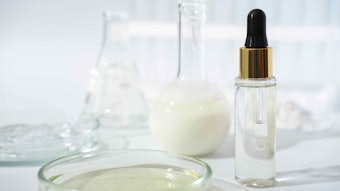This is the first of a series of four articles that will deal with different topics in the field of surfactants from a functional, rather than chemical, point of view. The function a surfactant brings to a formulation is in fact the reason a particular surfactant is chosen. The series will cover the properties surfactants provide: conditioning, wetting, detergency and emulsifi cation.
There is a commonality in the structure of all surfactants – the presence of a hydrophilic portion and a hydrophobic portion. The hydrophilic end is watersoluble and is a polar or ionic group. The hydrophobic end is water-insoluble and can be either a hydrocarbon chain or silicone. This dual functionality is the source of the surface activity. The activity is due in large part to the unique structure of water. The water molecule has a great deal of inter-molecular hydrogen bonding. This accounts for the surface tension of water. Anything that disrupts the hydrogen bonding in water does so at a high energetic cost. Put in another way, oil floating on water, which appears to be an ordered system, is at the lowest free energy since the oil molecules disrupt the fewest number hydrogen bonds in the water. This concept of lowest free energy of the system drives all of the surfactant properties.










